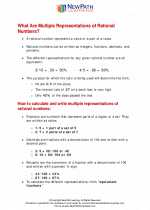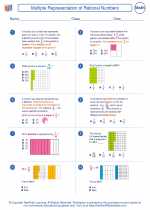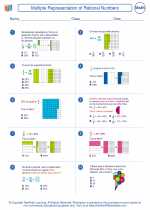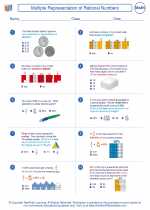Multiple Representation of Rational Numbers
Rational numbers are numbers that can be expressed as a fraction where the numerator and denominator are both integers. A rational number can be represented in multiple ways, including as a fraction, a decimal, and a percentage. Understanding the multiple representations of rational numbers is important for solving problems and comparing quantities.
Fraction Representation
A rational number can be represented as a fraction, such as 3/4, 5/2, or 7/9. In a fraction, the numerator represents the part of the whole, while the denominator represents the total number of equal parts.
Decimal Representation
Rational numbers can also be represented as decimals. When a rational number is expressed as a decimal, it can be terminating (e.g., 0.75) or repeating (e.g., 0.333...). Converting between fractions and decimals is a key skill when working with rational numbers.
Percentage Representation
Another way to represent rational numbers is as a percentage. Percentages are used to compare quantities and are calculated as a fraction of 100. For example, 0.5 as a percentage is 50%.
Study Guide
Here are some key points to remember when working with multiple representations of rational numbers:
- Understand the relationship between fractions, decimals, and percentages.
- Practice converting between fractions, decimals, and percentages.
- Be able to compare and order rational numbers in different representations.
- Apply the different representations to solve real-world problems.
By mastering the multiple representations of rational numbers, you'll be better equipped to solve mathematical problems and understand the relationships between different forms of numbers.
.◂Math Worksheets and Study Guides Sixth Grade. Multiple Representation of Rational Numbers

 Worksheet/Answer key
Worksheet/Answer key
 Worksheet/Answer key
Worksheet/Answer key
 Worksheet/Answer key
Worksheet/Answer key
